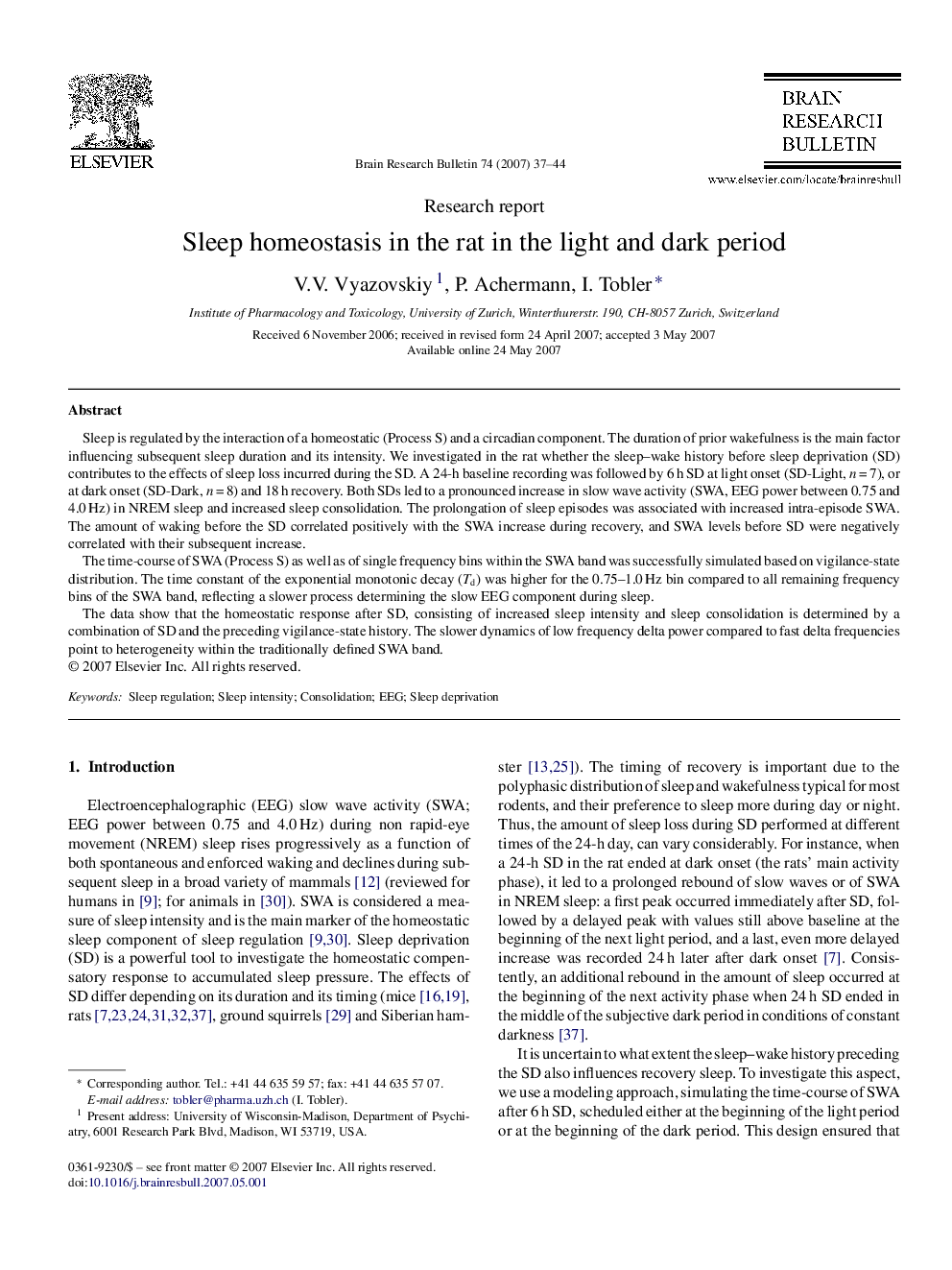| Article ID | Journal | Published Year | Pages | File Type |
|---|---|---|---|---|
| 4319901 | Brain Research Bulletin | 2007 | 8 Pages |
Sleep is regulated by the interaction of a homeostatic (Process S) and a circadian component. The duration of prior wakefulness is the main factor influencing subsequent sleep duration and its intensity. We investigated in the rat whether the sleep–wake history before sleep deprivation (SD) contributes to the effects of sleep loss incurred during the SD. A 24-h baseline recording was followed by 6 h SD at light onset (SD-Light, n = 7), or at dark onset (SD-Dark, n = 8) and 18 h recovery. Both SDs led to a pronounced increase in slow wave activity (SWA, EEG power between 0.75 and 4.0 Hz) in NREM sleep and increased sleep consolidation. The prolongation of sleep episodes was associated with increased intra-episode SWA. The amount of waking before the SD correlated positively with the SWA increase during recovery, and SWA levels before SD were negatively correlated with their subsequent increase.The time-course of SWA (Process S) as well as of single frequency bins within the SWA band was successfully simulated based on vigilance-state distribution. The time constant of the exponential monotonic decay (Td) was higher for the 0.75–1.0 Hz bin compared to all remaining frequency bins of the SWA band, reflecting a slower process determining the slow EEG component during sleep.The data show that the homeostatic response after SD, consisting of increased sleep intensity and sleep consolidation is determined by a combination of SD and the preceding vigilance-state history. The slower dynamics of low frequency delta power compared to fast delta frequencies point to heterogeneity within the traditionally defined SWA band.
